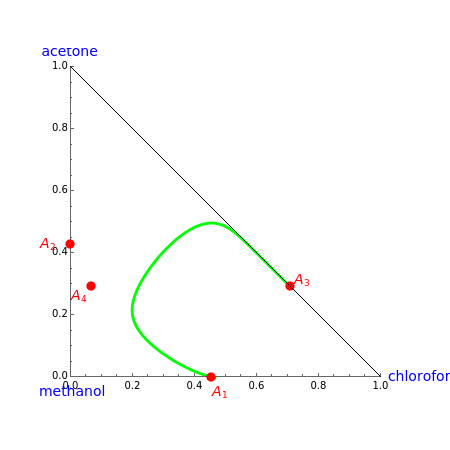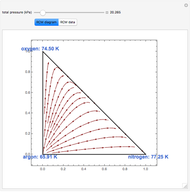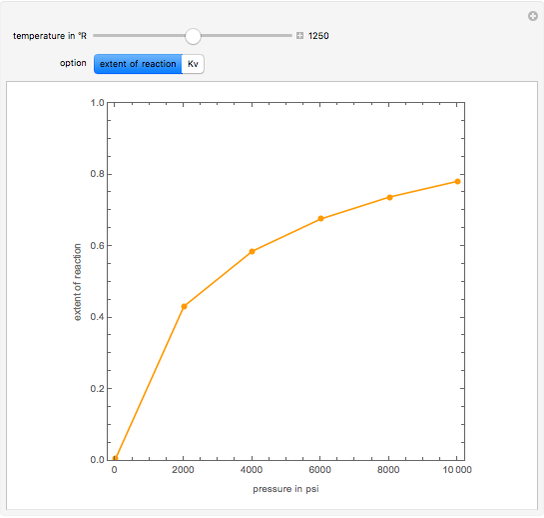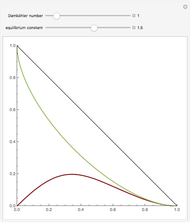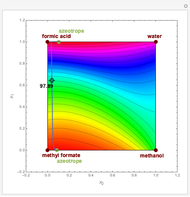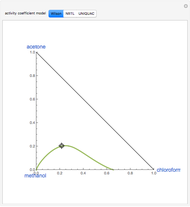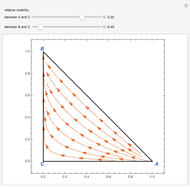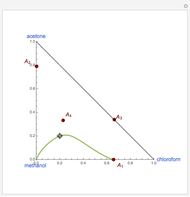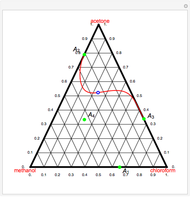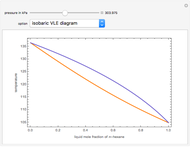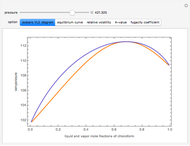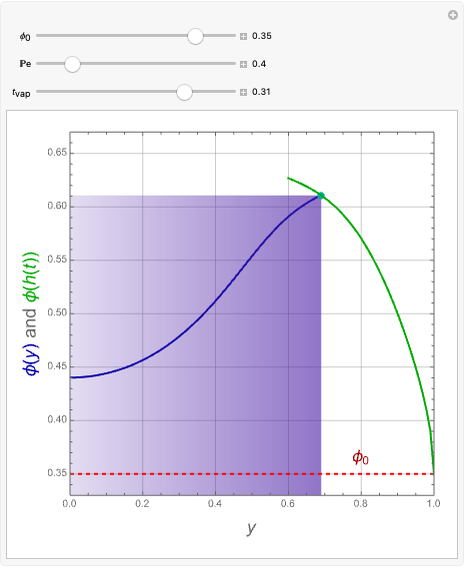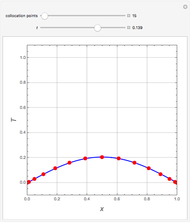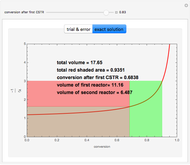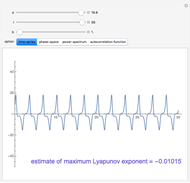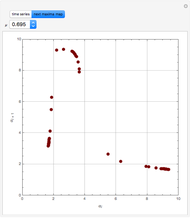Residue Curves at High Total Pressures

Requires a Wolfram Notebook System
Interact on desktop, mobile and cloud with the free Wolfram Player or other Wolfram Language products.
This Demonstration shows the residue curve of a non-ideal ternary mixture composed of chloroform, acetone, and methanol at a total pressure of 10 atm. Deviation from ideal gas phase behavior must be considered. Indeed, the vapor-phase fugacity coefficient is computed using the Soave–Redlich–Kwong equation of state. This mixture presents three binary azeotropes and a ternary azeotrope, marked in the ternary diagram by  for
for  . Azeotropes appear as extrema of the residue curves. You can drag the locator and the program will plot the residue curve passing through the locator position. The location of the ternary azeotrope has been determined separately since it is neither a stable nor an unstable node. Compositions of all binary azeotropes are obtained from the residue curve calculations, as follows:
. Azeotropes appear as extrema of the residue curves. You can drag the locator and the program will plot the residue curve passing through the locator position. The location of the ternary azeotrope has been determined separately since it is neither a stable nor an unstable node. Compositions of all binary azeotropes are obtained from the residue curve calculations, as follows:
Contributed by: Housam Binous (March 2011)
Open content licensed under CC BY-NC-SA
Snapshots
Details
VLE data is computed using the following formula (the gamma-phi equation):  where
where  and
and  are the vapor and liquid mole fractions of component
are the vapor and liquid mole fractions of component  ,
,  is the total pressure,
is the total pressure,  is the saturation vapor pressure of component
is the saturation vapor pressure of component  , and
, and  and
and  are the vapor-phase fugacity coefficient and the liquid-phase activity coefficient determined using the Soave-Redlich-Kwong equation of state and the Wilson model, respectively.
are the vapor-phase fugacity coefficient and the liquid-phase activity coefficient determined using the Soave-Redlich-Kwong equation of state and the Wilson model, respectively.
For more information, see
M. F. Doherty and M. F. Malone, Conceptual Design of Distillation Systems, New York: McGraw-Hill, 2001.
H. Binous, A. Wakad, and S. Ben Achour, "Residue Curve Map Calculation of a Ternary Mixture," Computer in Education Journal, 16(4), 2006 pp. 32-35.
Permanent Citation
